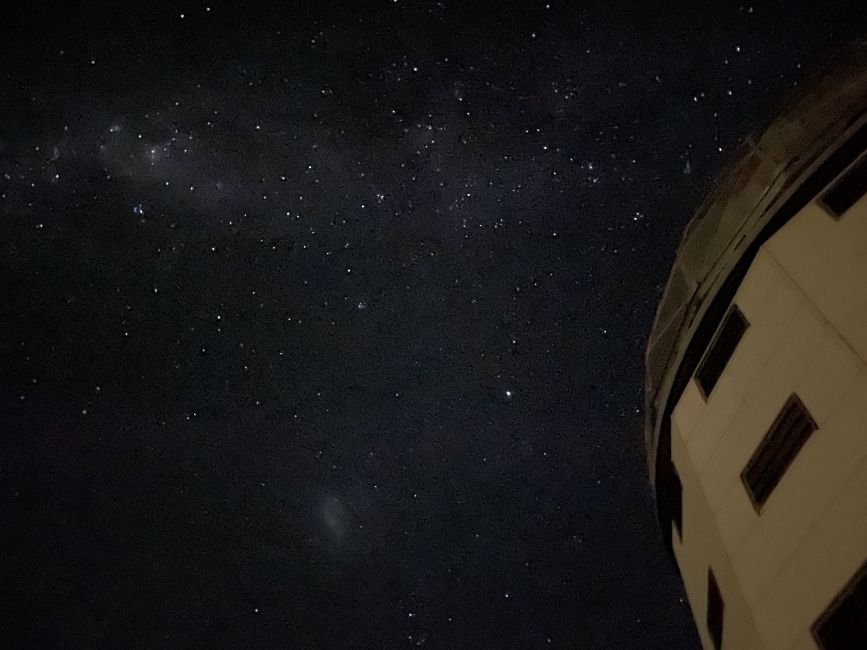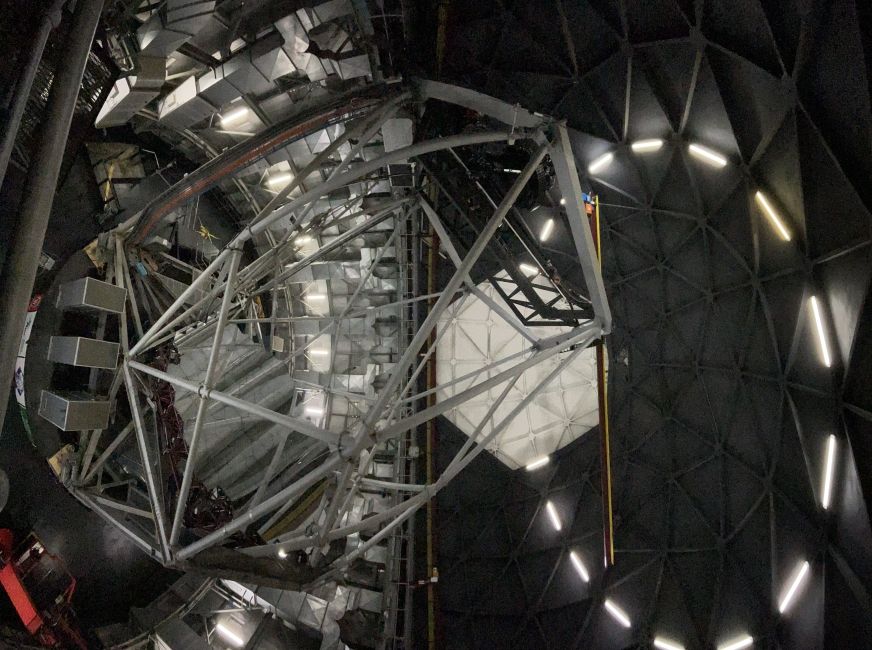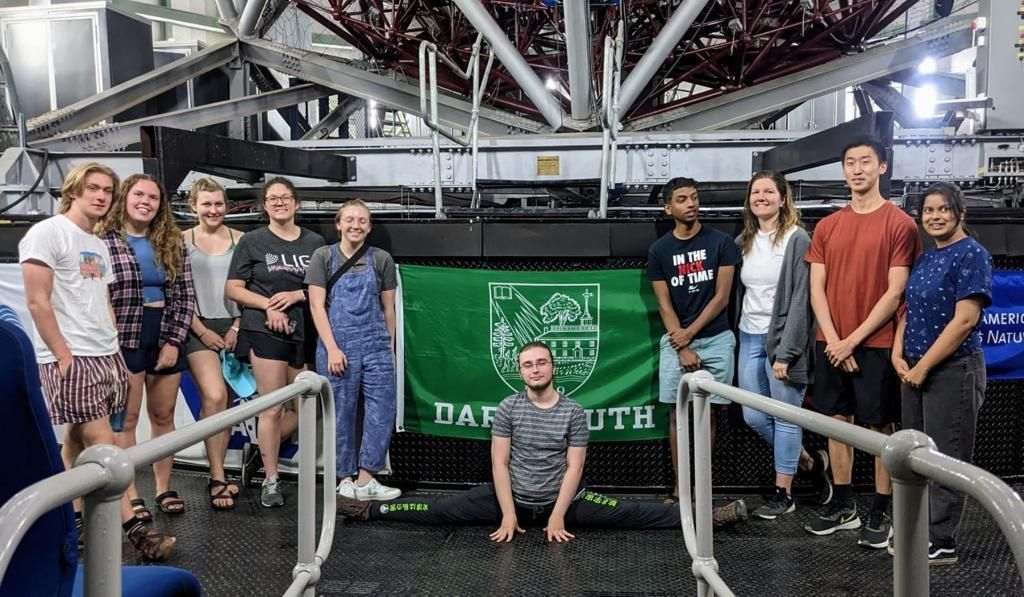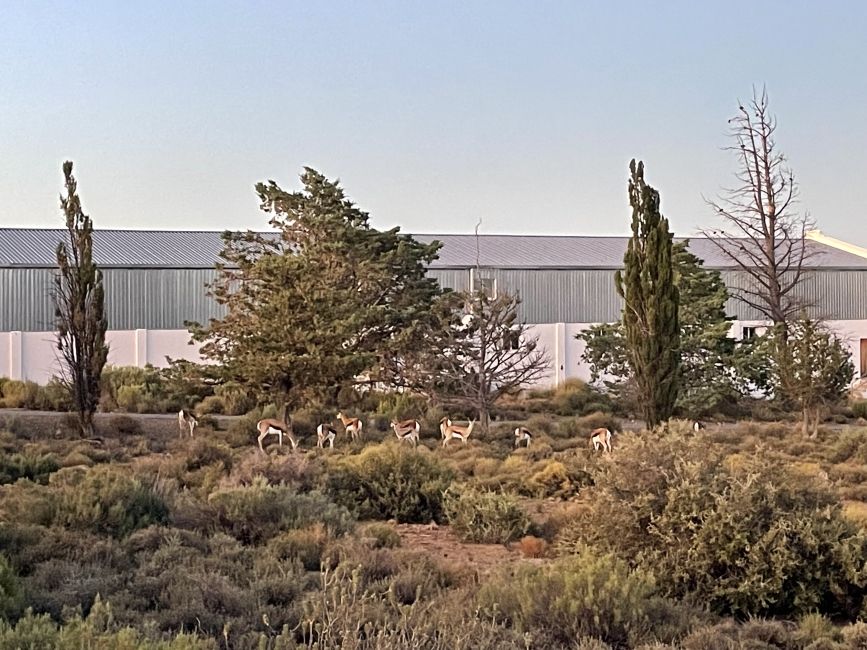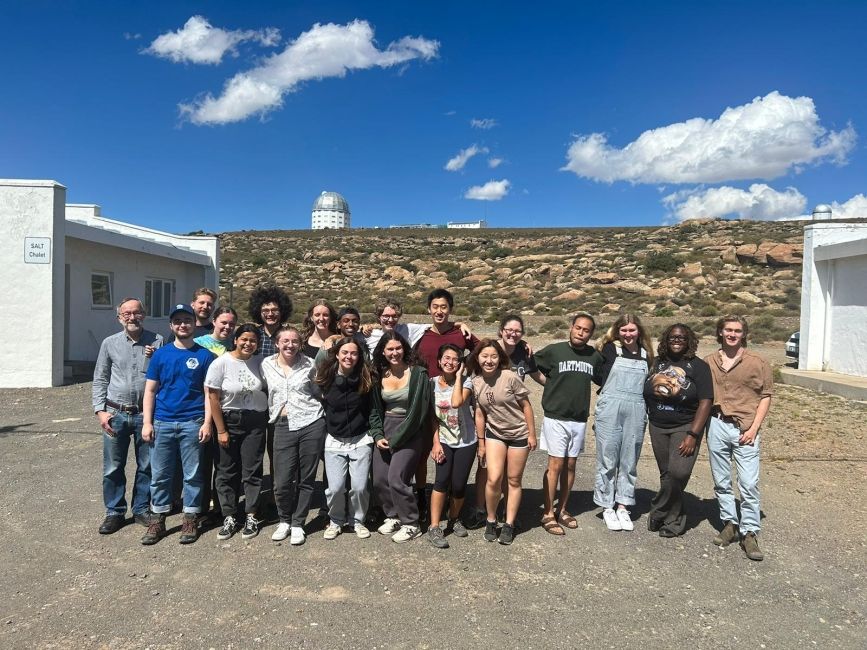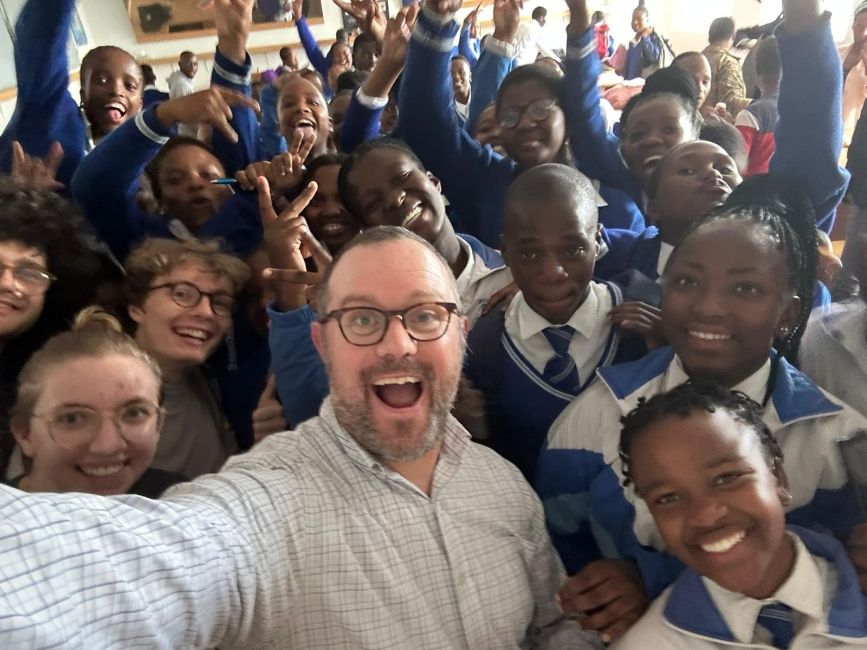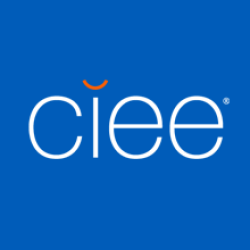Among the stars: Highlights from observing in Sutherland
Authored by Rujuta Purohit (she/her)
Rujuta is a third year undergraduate student at Dartmouth College, U.S, majoring in Physics and Astronomy. She hopes to develop her coding skills through projects at Sutherland and learn about the unique culture in South Africa.
After a month of enjoying the Cape Town Summer, it was time to pack our bags for a week of observing in Sutherland. About a 4-hour drive away, Sutherland is home to several telescopes operated by the South African Astronomical Observatory (SAAO), including the Southern African Large Telescope (SALT). SALT is the largest optical telescope in the Southern Hemisphere and hosts some of the world’s best spectroscopic instruments. The trip to Sutherland and the observations we did there were built into the study abroad program.
Sutherland was beautiful. The night sky was breathtaking. We were so far away from large cities which meant there was no significant light pollution. You could see the big arm of the Milky Way as it runs from one horizon to the other. Astute astronomers will also see the Large and Small Magellanic Clouds, satellite galaxies that are only visible from the Southern Hemisphere. On one of the nights, we saw the Green Comet as a bright flash of green in the sky near Mars. The Green Comet originates from outside Pluto in the Oort Cloud and orbits the Sun every 50,000 years. Mars is also super bright; you can easily pick it out.
Observing itself was great. We were directly working on two projects: taking images of RR Lyrae stars and taking spectra of Cataclysmic Variables (CVs). RR Lyrae stars are extremely bright and variable stars. The project involved taking images in their bright periods to understand this pattern. CVs are binary star systems consisting of stars accreting material from each other. The project with the CVs involved recording the energy emitted by them over time to understand properties like their orbits, velocities, and so on.
The opportunity to not only be able to visit the telescopes at Sutherland but also use them was incredible. We stayed up all night (and slept all day) learning the ropes of the telescopes. Up in the Karoo desert, I realized just how powerful telescopes are. They place astronomy into the broadest of perspectives imaginable. The world is so much bigger than me, those around me, and even the telescopes we use. An entire universe of wonders and mysteries lies right above our heads, waiting to be explored.
As part of the study abroad, we have been learning to engage in science communication and have been participating in various science/astronomy outreach programs. These have been organized by the Educational Development Wing at SAAO. The first program we did was at a township in Cape Town. We did the second one while at a high school in Sutherland where we interacted with ninth graders.
Outreach has been a wonderful way to meet new people. Students—be it in Cape Town or in Sutherland—have the most amazing ideas and questions about the cosmos. These range from, “How was the Moon formed? Was it really from extrasolar material?” to “Are we alone in the universe? Will we ever find extra-terrestrial sapient life?” We carried out various classroom activities with the learners. A popular one was using cash-register-like receipt paper to map out the scale of the Solar System as a model. Pluto was on one end of the sheet while the Sun was on the other. This served as a way to introduce learners to the concept of astronomical distances. It also led to a conversation about the unequal spacing between planets and the theories behind their formation.
Through outreach, I have been exposed to unique perspectives that have only widened my lens for the world. Astronomy is a particularly interesting topic for students to ponder since it relates to big-picture ideas while using basic scientific principles. The concepts of gravity, forces, and energy are often brought up in many contexts. Most of all, it was terrific to meet energetic minds and discuss science with them.
Related Posts
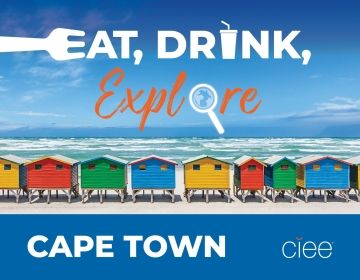
EAT, DRINK, EXPLORE: CAPE TOWN
BEST FOOD TO EAT IN CAPE TOWN If you’re looking to pinpoint South Africa’s national dish, here’s a helpful tip: there isn’t one. Cape Town’s multi-cultural heritage boasts British, French... keep reading
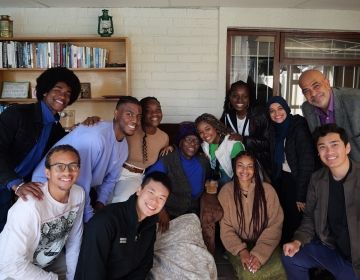
Reflecting on South Africa as a Frederick Douglass Global Fellow
By: Sam Li Stepping off the plane in Cape Town felt like stepping into a whirlwind of vibrant energy, complex history, and breathtaking landscapes. This wasn't just any summer adventure... keep reading
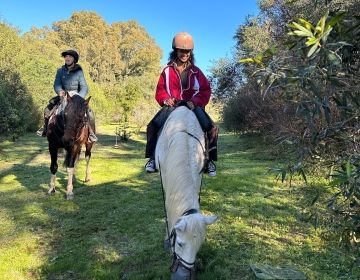
Equestrian Getaway in Cape Town
Authored by Haroni Sahilu (she/her) (Haroni is a rising senior at Arizona State University, majoring in Philosophy and Justice Studies. During her time in Cape Town, she hopes to aid... keep reading
